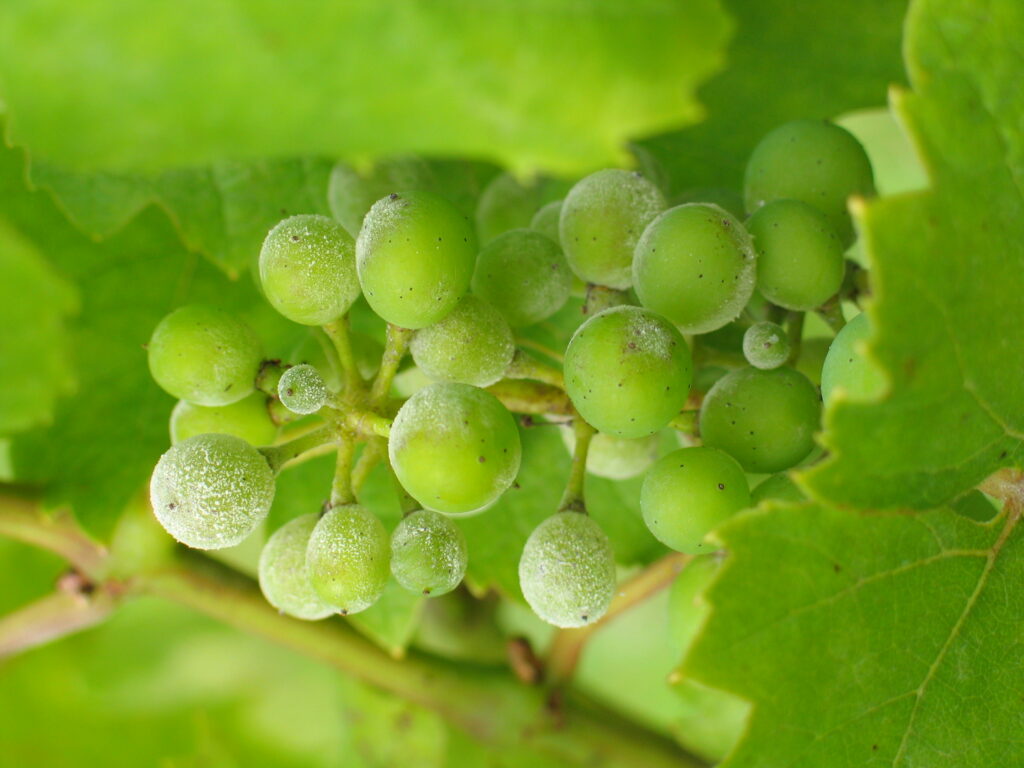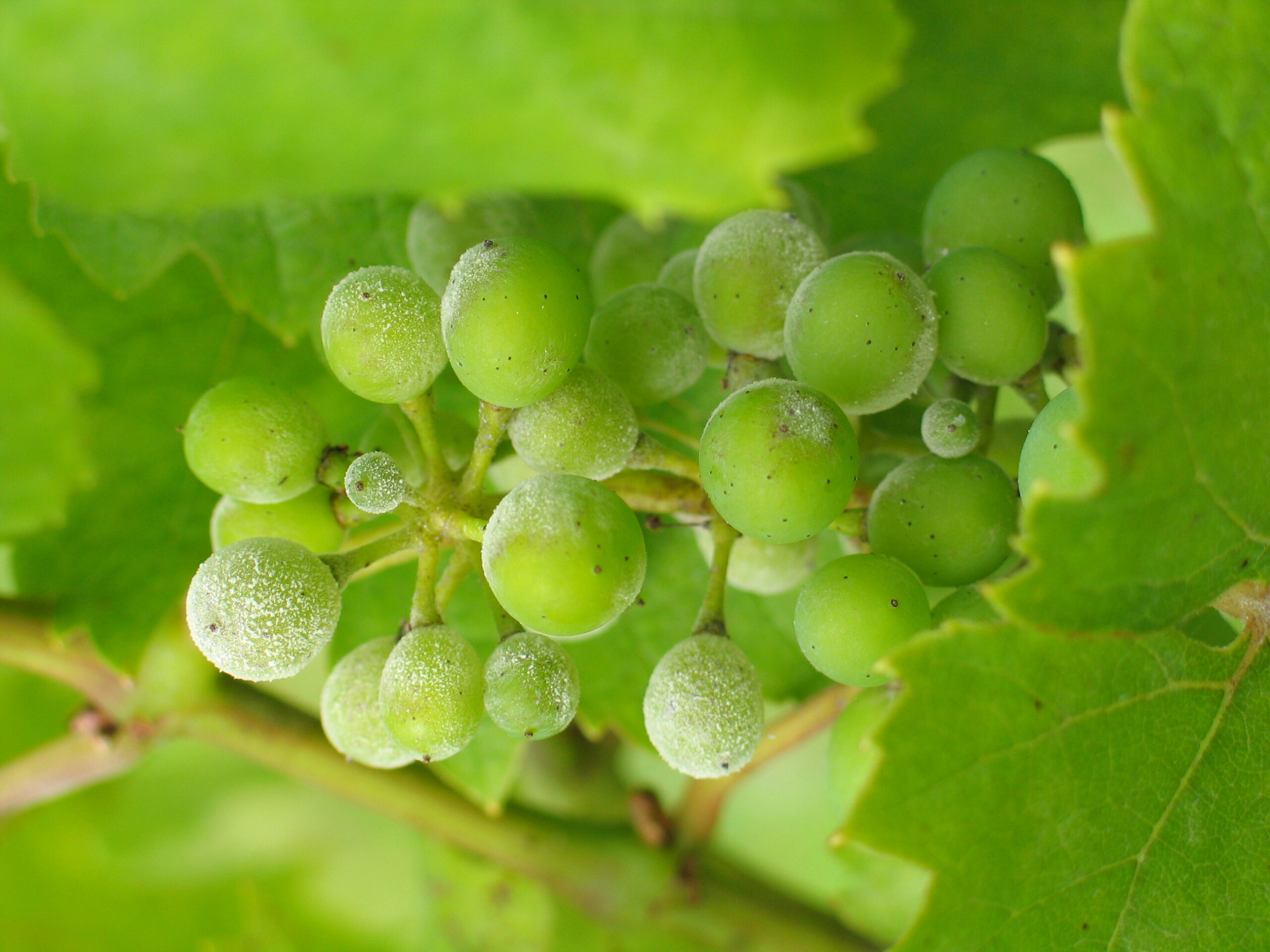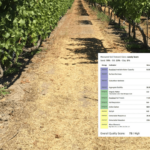Powdery mildew, among winegrowers, more known as Oidium, is caused by the fungus Uncinula necator. The disease originates from North America but is now widely spread among arid grape-growing areas around the world. The fungus can cause significant damage and reduce the quality and quantity of the fruit yield, and if not properly controlled, it may even reduce the vine growth.
Symptoms of Powdery mildew
Fungus Uncinula necator can infect all green parts of the grapevine. Infection usually appears first on the underside of basal leaves as a white powder. Later on, the fungus can cause mottling, curling, and withering of the leaves. Eventually, leaves dry out and drop off. Symptoms of infection on green shoots appear as dark brown to black lesions. On the canes, an old infection appears as reddish-brown areas. During the shooting period, petioles and other cluster parts can get infected through the season, and berries are more likely to get infected 3 to 4 weeks after bloom. An infection on the berries can appear as white and powdery or dark and dusty. Powdery mildew can result in shrivelling or cracking of the berries, which then dry up or never ripe. During the summer, the fungus produces small black bodies on infected leaves, shoots, and berries to overwinter.

Powdery mildew Disease cycle
The pathogen overwinters as fungal fruiting structures (chasmothecia) on canes, fruits, and leaves on the ground. In the spring, ascospores are released from the overwintering chasmothecia after rainfall and are carried to other grapevine tissues by the wind. The spores then germinate and cause primary infections. After the primary infection, the fungus develops another type of spore conidia, which is spread by the wind to other plant parts, where it causes secondary infections. The powdery mildew fungus, unlike black rot or downy mildew, doesn’t require free moister for its infection and disease development, but relative humidity between 40 and 100% and temperatures between 6 and 32 ° C. Therefore, powdery mildew can cause problems for grapevines also when it is too dry for other diseases to develop.
Disease management
Managing powdery mildew requires implementing several cultural practices. Some grape varieties are less susceptible to fungus than others. In general, the native American varieties are less susceptible than Vitis vinifera and its hybrids. Appropriate site selection and cultural practices that reduce humidity, enable good air circulation, and provide good light exposure can make a big difference when managing powdery mildew. Also, all old diseased plant materials should be removed and destroyed at the end of each growing season to prevent infections. Unfortunately, cultural practices are often not enough to fight the disease. Several fungicides on the market can be used against the disease. It is very important to control the early (primary) infection because the failure of powdery mildew control can also increase levels of other fruit rots. Winegrowers can benefit from model-driven decision support systems like eVineyard to determine the optimal timing for fungicide application.
Winegrowers, how are you protecting your grapevines from Powdery mildew infection? Let us know in a comment below!
Sources:
- British Columbia Ministry of Agriculture. (2015). Grape powdery mildew.
- John Hartman and Julie Beale. Plant Pathology Fact Sheet. Powdery mildew of Grape. 2008. University of Kentucky, Cooperative Extension Service.
- Powdery mildew infection; The Wine Idea. Retrieved in 2015.






2 responses to “Powdery mildew (Uncinula necator)”
i have a grapevine in the backyard , everything looks good, but the fruit when getting ripe it crack vertically like cutted by a razor blade; I wonder the kind of fungus is this.
Hello Filiberto, powdery mildew can cause cracks on grape berries. If powdery mildew occurs on grapes in the phase of grape enlarging, it stops the growth and development of berry skin and hardens the skin. While grape berry flesh is developing normally, at some point due to the pressure on the “inflexible” grape skins, the grape crack. There may also be other reason to make the grape crack such as grape berry moth, birds, as well as bad weather i.e. rainstorms or hail during the berry ripening process. Hope this helps.